Kirsty Mitchell
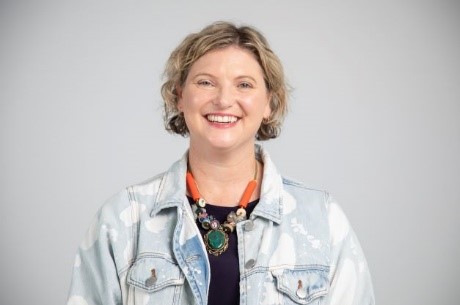 Project title: Exploration of a Daily Diary Practice of Neurographica for Work Recovery and Stress Reduction
Project title: Exploration of a Daily Diary Practice of Neurographica for Work Recovery and Stress Reduction
I am a “Yes, and..” practitioner working developmentally with clients in hopes and dreams in the field of career development since 1998. Yes, an affirmative acceptance of what is; and, future possibilities to enact change in an emergent process. My career transition into mental health and art therapy was driven by a need to incorporate creative approaches to change and for the inclusion of a deliberate focus on mental health in work and careers. I specialise in an art technique called Neurographica, neuro – brain, graphica – line, in a symbolic art making method to express and transform thoughts, feelings and experiences.
Throughout my career I predominantly supported complex clients, who often had a shared experience of work based or related trauma, stress, and anxiety. Based on these experiences, and grounded within literature, I have identified that expressive and creative practices have great potential to support work recovery and reduce work stress. My research project is a N=1 case study method where I engaged in a daily diary practice of Neurographica. This project explores the impact of art making on work recovery and work stress as measured by heart rate variability and subjective units of distress. Artworks were analysed using Betensky’s (1995) three step phenomenological method. This project has two aims, firstly to explore the impact of art therapy on work recovery and work stress using biometric measures; and, secondly, to integrate Neurographica within art therapy theories and practices.
My artworks have explored my research journey and Neurographica. My initial art piece expresses my resistance and fears relating to the research process that stem from a prior negative research experience. In doing so, I reconnected with the foundational element of research, ideas, in my second artwork, reigniting my passion and excitement for the process. All artworks are connected through a sense of flow and movement of line, shape and colour mirroring the Neurographica method. Common materials are paper, yarn, wool, pencils, and pen that allow for high levels of expression yet retain control. Themes are focused on neuroscience, dancing with problem solving, and finding new ways to express, explore and transform experiences and associated thoughts and feelings. They reflect the lifecycle of the research project, zooming in and out, identifying initial foundation elements through to broader integration with the final artwork made of artworks from my daily diary practice. I found the parallel process of artmaking and research to be a transformative experience that reduced the fear and anxiety associated with potential failure, a yes, and journey.
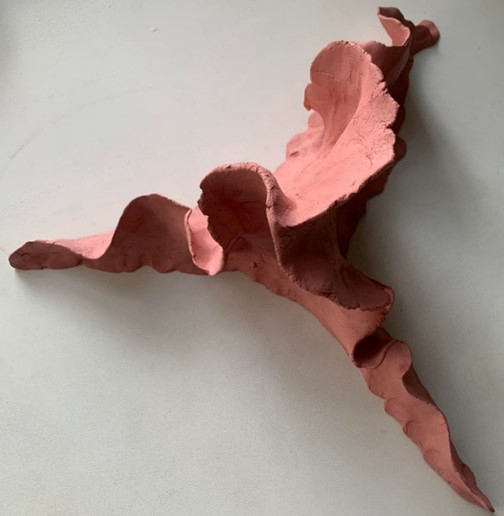
Clay
3D Sculpture
This piece represents the scars of a prior research journey. Each edge felt like a cliff face leading nowhere and resulting in nothing. In making this piece I have reimagined the experience to reflect on the skills and strengths I gained in the process. I use this learning to guide my journey forward.
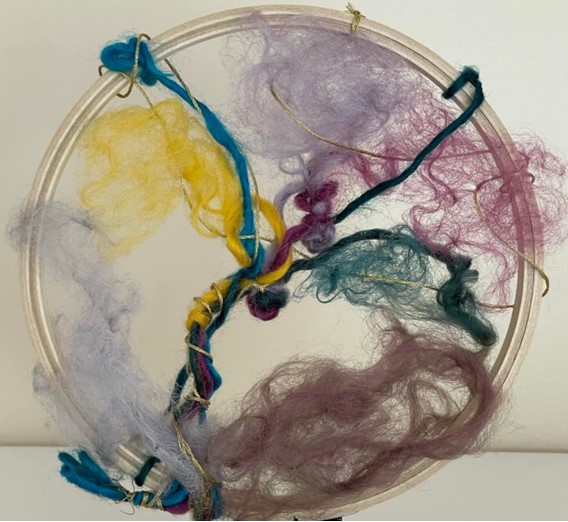
Yarn and Thread on Embroidery Hoop
3D Sculpture
This artwork represents the ephemeral and fluid nature of ideas, how some coalesce, whilst others disappear, supporting form are the golden strands of inspiration. The great hope is that these ideas advance your quest, the great fear is that you become utterly lost.
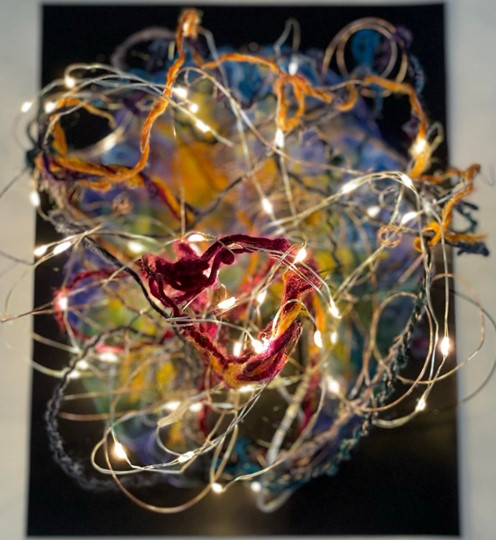
Wire, Wool, String Lights, Brain Image
A4 Sculpture
Neurographica brain sculpture, wire represents neural architecture and lived experience, string lights highlight activation pathways from the brain stem through to the prefrontal cortex. Foundation photo Gazzaley & Anguera-Singla (2015).
Reference: Foundation image photo by Adam Gazzaley & Roger Anguera-Singla, 2015, p 45, Aspen Institute (2021). Neuroarts Blueprint, John Hopkins University, United States.
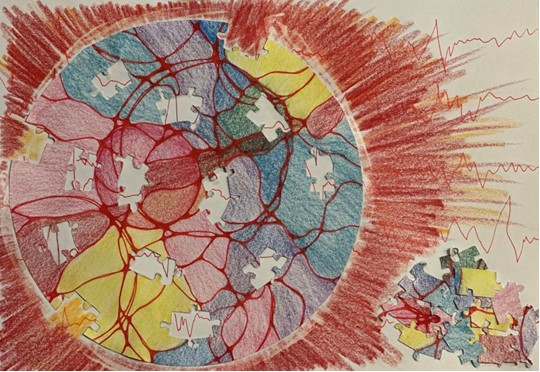
Pens, coloured pencil on paper
A4 Drawing
This image represents the puzzle of data collection using biometric measures and an art-based process, attempting to capture the tentative and fleeting signal within the messy, shouty, noise of life. Chasing frustration and confusion, hoping that patterns emerge to create meaning and clarity.
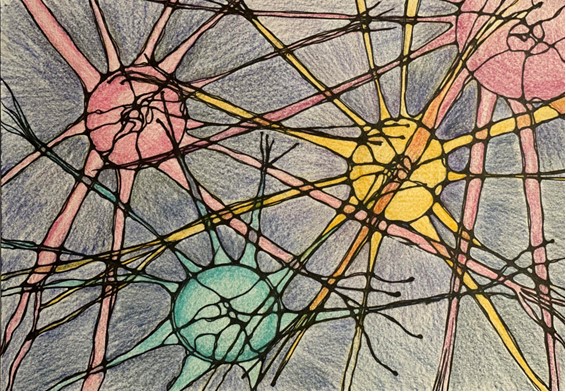
Gel pens, coloured pencil on paper
A4 Drawing
This is a neurographic drawing of neurons highlighting the potential, activation and interconnection that is the energy of life moving through us.
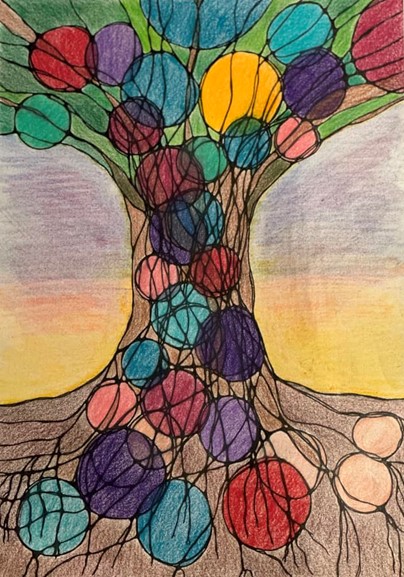
Gel pens, coloured pencil on paper
A3 Drawing
My Neurotree bears witness to my research journey. My past provided me strength and foundations, my present provided me support and connection to persevere despite challenges, and my future provides a view of clarity, hope and excitement for what is next.
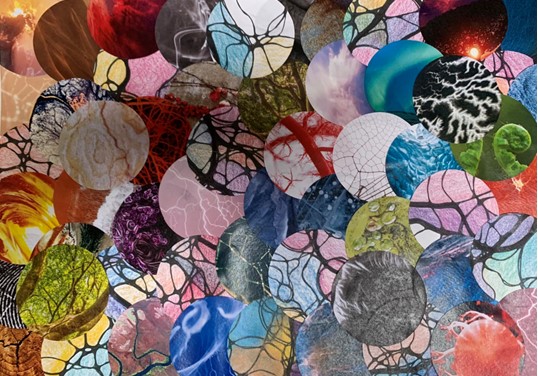
Paper, Neurographica drawings, Stock Photos (Pexels.com)
A3 Collage
This image integrates Neurographica drawings made during the research project with the Neurographica found within the natural world, around us and within us. This method aligns us with the lines of life.
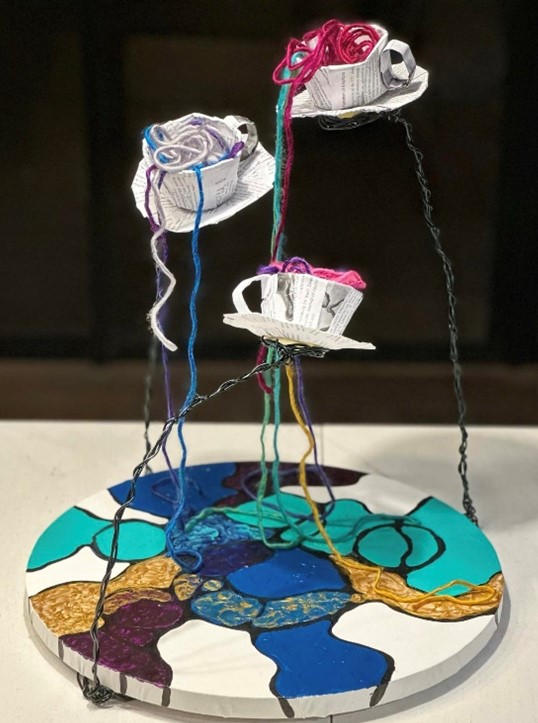
Neurographica painting acrylics on canvas, printed research papers, PVA glue, wool, wire
3D Sculpture
Neurographica provides a method to capture, process and transform the brain and heart tangles from all domains of life that spill over. Life is an open system with energy moving through us and with us overcoming the constraints, real or perceived. What if I flowed with it?
